Full of character, less overrun by tourists, and a distinctly European vibe make Quebec City a very worthwhile place to visit, says R. Venkatanathan as he describes a vacation his family had there a while ago
Our family got together recently in Toronto where our daughter lives. We also wanted to spend a few days at a place outside Toronto which none of us had been to before. Montreal was ruled out as our daughter had been there with her friends already. I suggested Halifax but was voted down (“There is nothing in Halifax!”), and so we settled on Quebec City.
Quebec is a predominantly French-speaking province. We wondered if language would be an issue; however, my wife speaks passable French (courtesy Alliance Francaise) which would help somewhat, we were convinced. I asked a few colleagues in my office who had studied in Canada about Quebec City. All of them enthusiastically endorsed the idea: “It is very quaint, very European with cobblestone streets, great for walking…” These were common descriptions of the city which sealed the decision in its favour.
We landed in Quebec City after a short flight of just over an hour from Toronto. Thanks to heavy rain, it took us more than an hour to get an Uber from the airport. While looking for a place to stay, we found that most Airbnb options in the centre of the city were on the third floor or higher with no lifts in the building, a problem carrying luggage up. We therefore booked a nice house in a suburb called Beauport which is just a 15-minute drive from the city centre.
Quebec City is the second largest city in Quebec province after Montreal. It is situated along the St Lawrence River which connects the Great Lakes to the North Atlantic Ocean (the river also forms the natural boundary between the US and Canada for a part of its length). During World War II, two historic meetings took place here in 1943 and 1944 between President Roosevelt and Winston Churchill – apparently details of the D-Day invasion were finalised then.
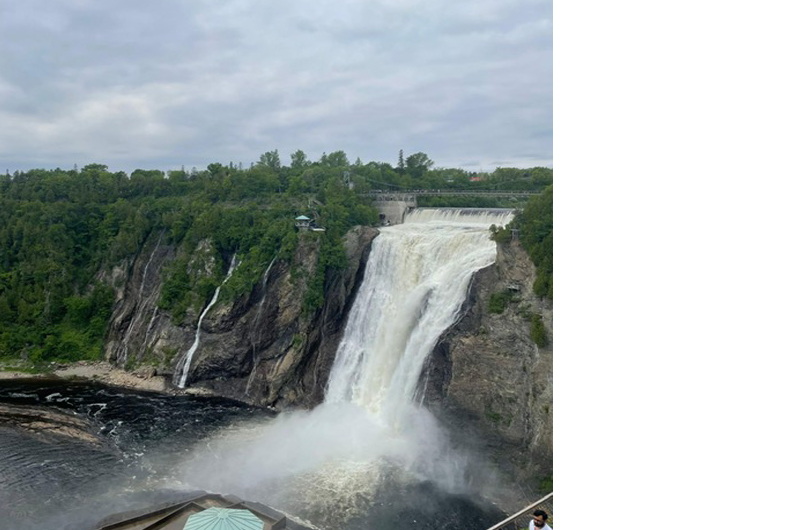
The following morning, while searching for sightseeing options, we found that Montmorency Falls, one of the biggest tourist attractions, was just a few km away down the same road where we were staying. At 83-m height, it is a full 30 m higher than the more famous Niagara Falls. A very conveniently located bridge just overlooking the top of the falls gives you spectacular views from multiple angles.
Several walking trails exist after crossing the bridge, where you could spend a few hours on. Further on, a long set of steps takes you all the way down to the lake at the foot of the falls. After walking around the lake, there is a cable car that takes you back to the top of the falls. The Niagara experience, especially with the ride in the boats that take you quite close to the falls, is indeed memorable, but Montmorency is far less crowded and touristy, leading to a more relaxed and serene experience.
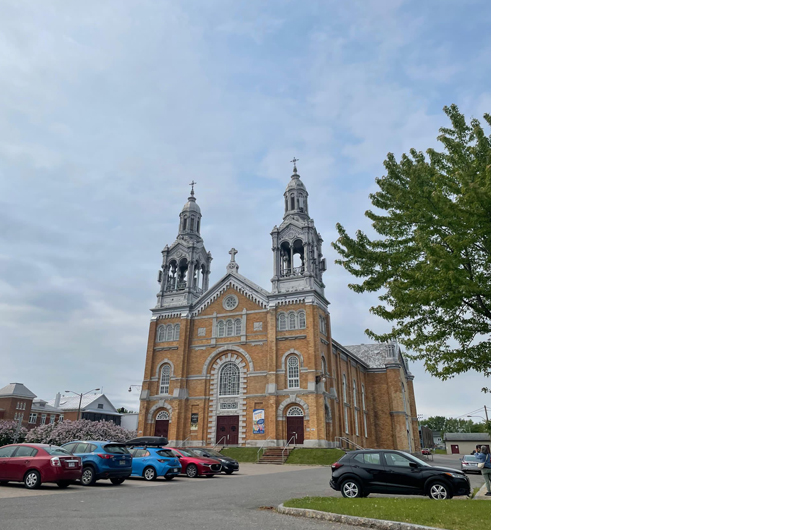
Old Quebec is one of North America’s oldest cities with 400 years of incredible history. It is the only walled city north of Mexico, and the walls and the four gates that surround the Old City takes you back in a time travel. The most popular spot is the Dufferin Terrace with a magnificent view of the St Lawrence River, full of live entertainment in summer. It is named after Lord Dufferin, a Governor General of Canada.
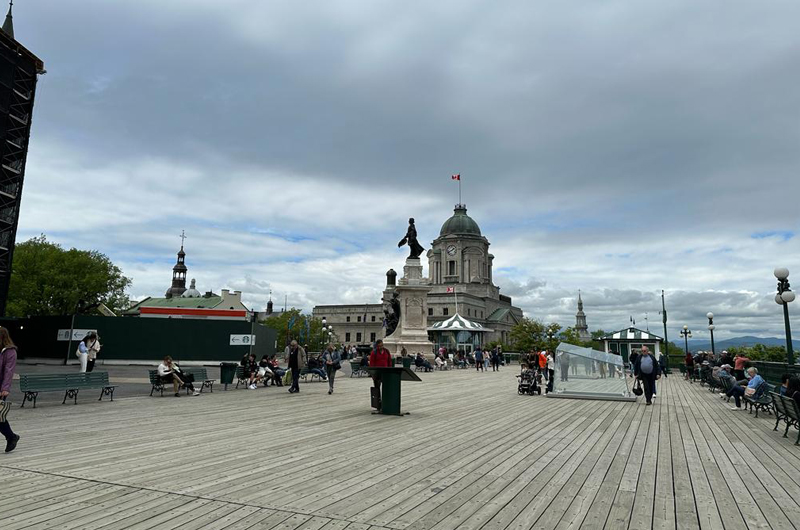
Adjacent to the Dufferin Terrace and towering over it is The Chateau Frontenac, the most photographed hotel in the world, originally built by the Canadian Pacific Railway around 1908. The World War II allies Franklin Roosevelt, Churchill and the Canadian PM met here for the First and Second Quebec conferences in 1943 and 1944. In 1953 this hotel was also the location for the final scene in Alfred Hitchcock’s film I Confess.
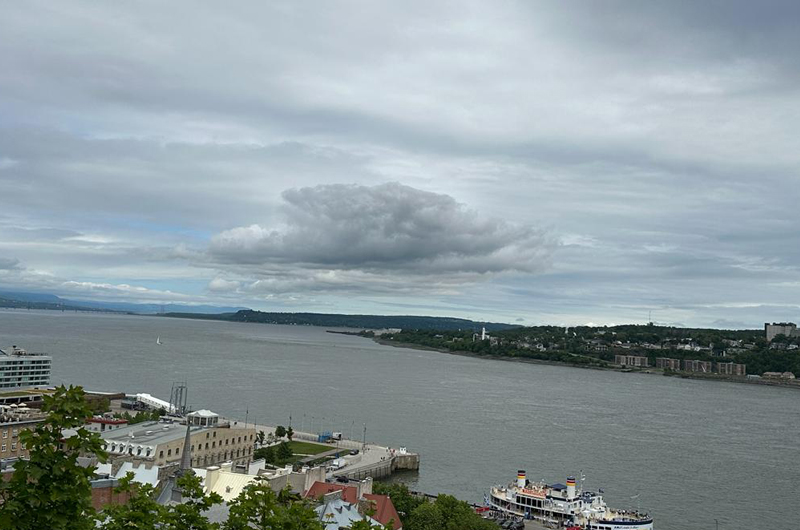
The Old City is very quaint with narrow and cobbled streets, filled with art galleries, bistros and restaurants. We spent almost an entire day just walking around the streets as well as in the parks outside the walled city. We were just about to return back to the walled city through the St Louis Gate when my wife suddenly exclaimed, “That statue looks familiar!” And so it was – a life-size bronze bust of Gandhi with his characteristic glasses and shawl. The square bronze plinth of the bust rests on a black granite base five feet tall. The statue was unveiled on 2nd Nov, 2006 and was created by Indian artist Gautam Pal.
We did have some apprehensions about Quebec City that it would be predominantly French-speaking and hence difficult to navigate. Much to our surprise, however, English is widely spoken. At every restaurant, the waitress would first ask if our language was English or French, which made life so much easier. We hardly saw any Indian tourist (there were quite a few other Asian tourists though), may be because of the misconception that Quebec is only French-speaking.
Full of character, less overrun by tourists, and a distinctly European vibe make Quebec City a very worthwhile place to visit.
(The writer works for an international bank in Singapore and enjoys travelling.)


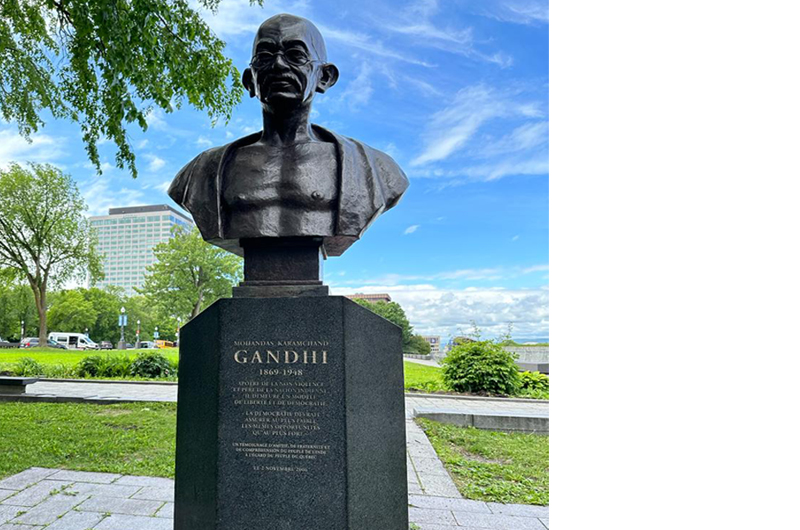
 from Webdoux
from Webdoux